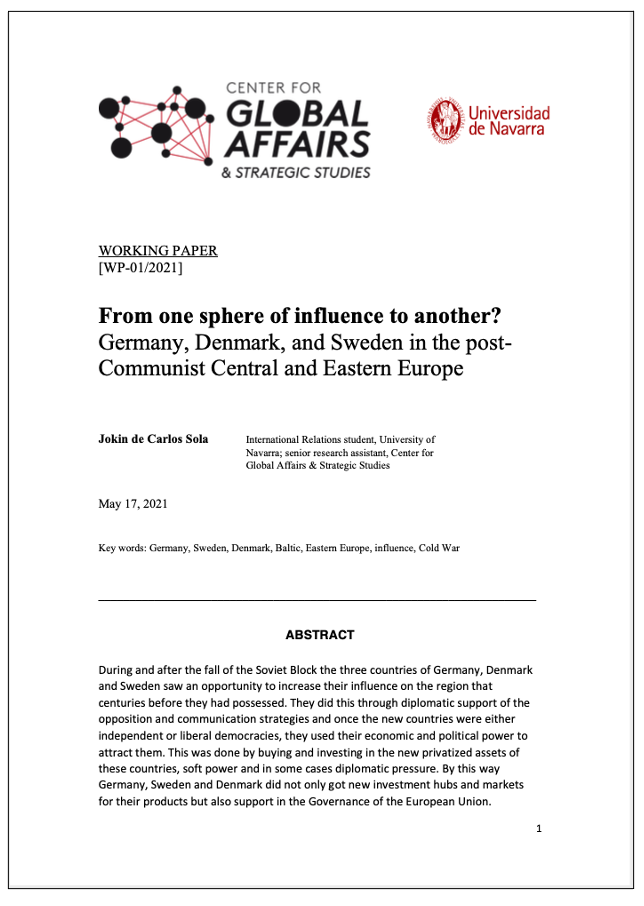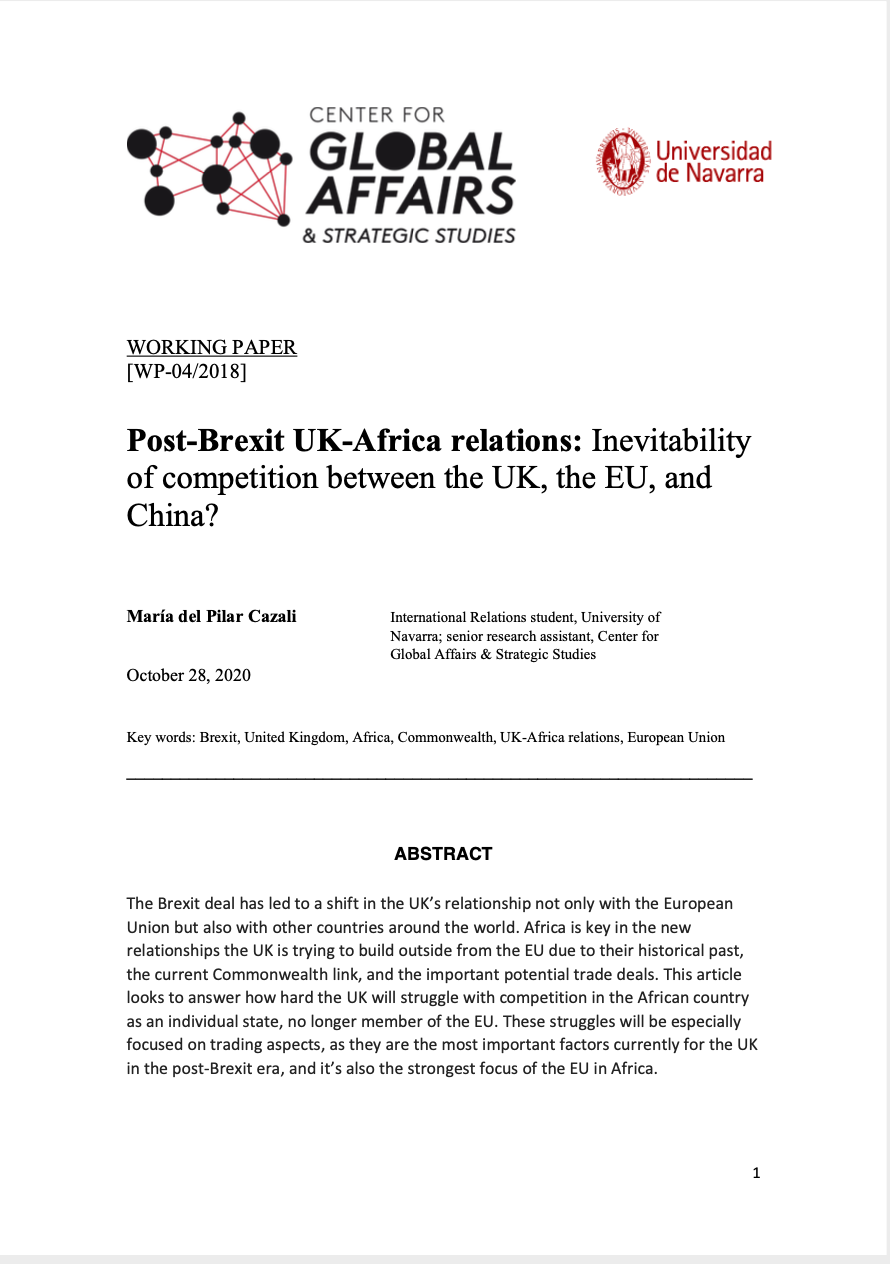Ruta de navegación
Menú de navegación
Blogs
Entries with Categories Global Affairs Documents of work .
June 15, 2021
WORKING PAPER / Jon Paris Oses, Jokin de Carlos Sola and Túlio Dias de Assis
ABSTRACT
South Korea finds itself in the middle of the geopolitical ambitions of regional giants, while at the same time addressing their own conflictive relationship with their northern counterpart. Because of that, a global and also a peninsular overview of their characteristics from an international relations perspective has been analysed, with the objective in mind of identifying the main dynamics and driving factors that strategically influence South Korea in the present times with an eye into the future. Pursuing that analysis, a global perspective and an inter-Korean perspective were suitable to better address the main issues, with special attention to the influence of the two big powers in relation with Seoul, the US and China, as well as the constant uncertainty North Korea generates in the relations between both Koreas. Findings regarding key aspects such as the US military presence in South Korean soil, or the possibility of a Korean reunification suggest the primacy of continuity and controlled stability for the next ten years, as the stakes are too high for the actors involved to take high-risk high-benefit decisions. The main conclusions follow the same direction, with stagnation as present condition South Korea will have to find its way, always with the inter-Korean relations in mind, if it wants to survive and develop its own path under the shadow of two giants.
WORKING PAPER / Jokin de Carlos Sola
ABSTRACT
During and after the fall of the Soviet Block the three countries of Germany, Denmark and Sweden saw an opportunity to increase their influence on the region that centuries before they had possessed. They did this through diplomatic support of the opposition and communication strategies and once the new countries were either independent or liberal democracies, they used their economic and political power to attract them. This was done by buying and investing in the new privatised assets of these countries, soft power and in some cases diplomatic pressure. By this way Germany, Sweden and Denmark did not only got new investment hubs and markets for their products but also support in the Governance of the European Union.
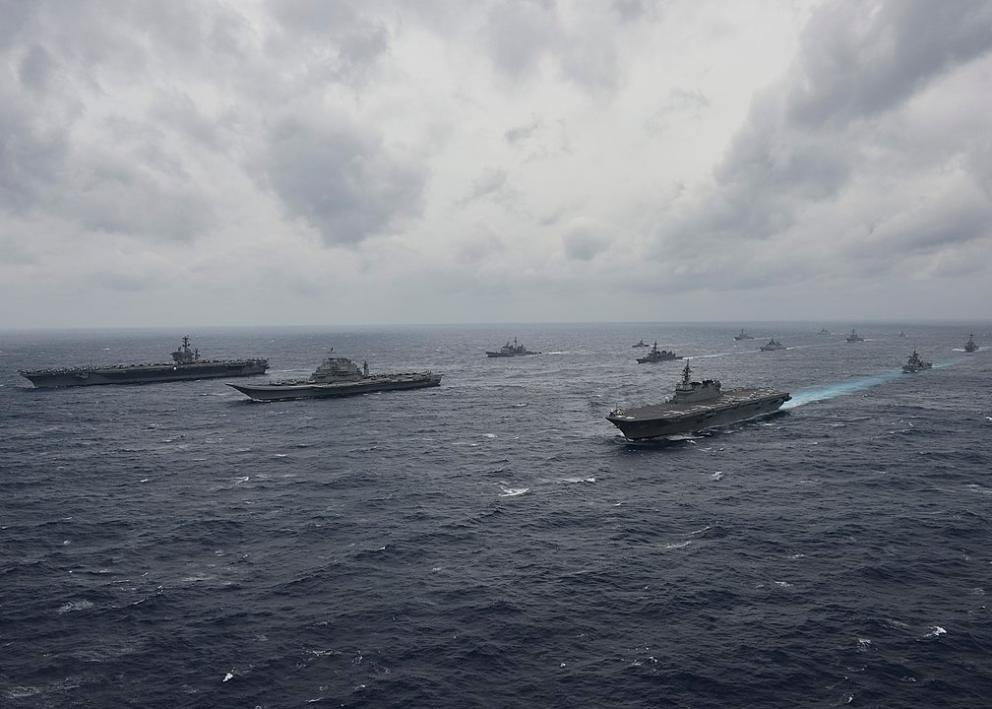
Ships of the US, India and Japan in the Bay of Bengal during exercise Malabar 2017 [US Navy].
JOURNAL / Shahana Thankachan
 [Document of 6 pages. Download PDF] [Document of 6 pages. Download PDF].
[Document of 6 pages. Download PDF] [Document of 6 pages. Download PDF].
INTRODUCTION
There can be no objective and singular definition of the Indo-Pacific, one can only provide an Indian definition, a Japanese definition, a US definition, an ASEAN definition, etc. This is not to say that there are no common grounds in these definitions, there are as many commonalities as there are differences, and this is what makes this topic so hot and dynamic. The geopolitical reality of the Indo-Pacific perfectly represents a great power rivalry at the systemic level and also a perfect regional security complex. In this complex matrix, this paper will seek to focus on the Indo-Pacific from the perspective of India. While the term "Indo" in the Indo-Pacific does not mean India, it does refer to the Indian Ocean and India is the most important power in the Indian Ocean. Therefore, it is very important to fully understand the Indian perspective. The paper will begin by outlining the origin of the concept and thereafter the challenges in the Indian approach to the Indo-Pacific and the future prospects.
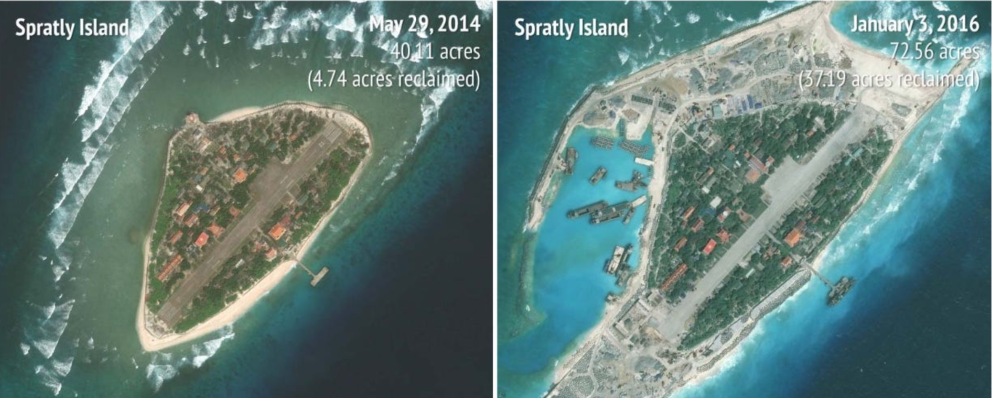
Chinese fortification on disputed small islands [CSIS satellite imagery].
JOURNAL / Fernando Delage
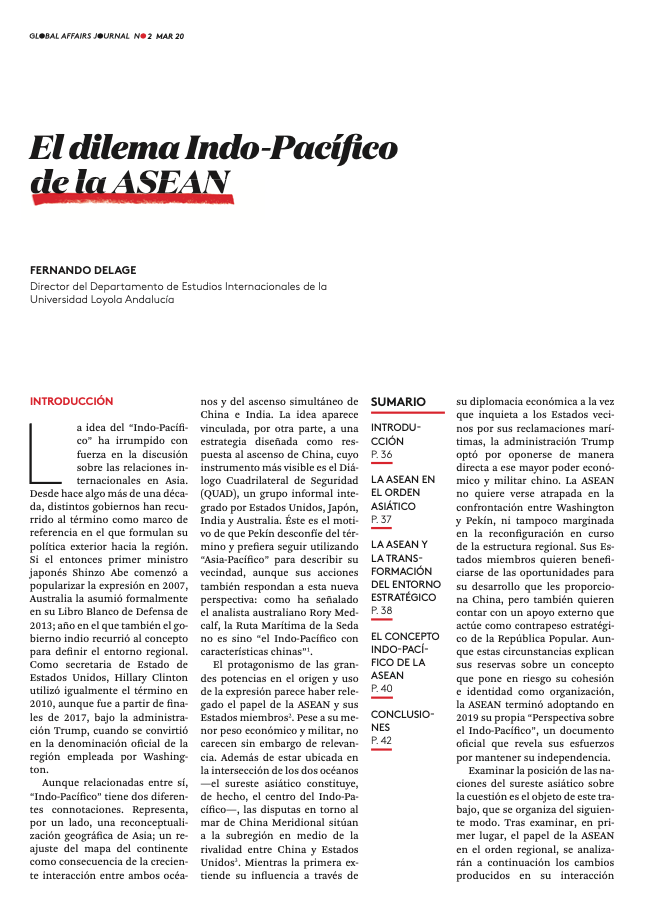 [8-page document. download in PDF].
[8-page document. download in PDF].
INTRODUCTION
The idea of the "Indo-Pacific" has burst into the discussion on International Office in Asia. For a little over a decade now, different governments have used the term as the framework of reference letter in which they formulate their foreign policy towards the region. If the then Japanese Prime Minister Shinzo Abe began to popularise the expression in 2007, Australia formally adopted it in its 2013 Defence White Paper, a year in which the Indian government also resorted to the concept to define the regional environment. As US Secretary of State administrative assistant , Hillary Clinton similarly used the term in 2010, although it was not until late 2017, under the Trump administration, that it became Washington's official name for the region.
Although related, "Indo-Pacific" has two different connotations. It represents, on the one hand, a geographical reconceptualisation of Asia; a re-mapping of the continent as a consequence of the growing interaction between the two oceans and the simultaneous rise of China and India. The idea is also linked to a strategy designed in response to China's rise, the most visible instrument of which is the Quadrilateral Security Dialogue (QUAD), an informal group comprising the United States, Japan, India and Australia. This is why Beijing is wary of the term and prefers to continue to use "Asia-Pacific" to describe its neighbourhood, even if its actions also respond to this new perspective: as Australian analyst Rory Medcalf has pointed out, the Maritime Silk Road is nothing more than "the Indo-Pacific with Chinese characteristics".
The prominence of the major powers in the origin and use of the term seems to have relegated the role of ASEAN and its member states. Despite their lesser economic and military weight, they are not without relevance. In addition to being located at the intersection of the two oceans - Southeast Asia is, in fact, the centre of the Indo-Pacific - disputes over the South China Sea place the sub-region in the midst of the rivalry between China and the United States. While the former extends its influence through economic diplomacy while unsettling neighbouring states over their maritime claims, the Trump administration has chosen to directly oppose China's increased economic and military power. ASEAN does not want to be caught up in the confrontation between Washington and Beijing, nor does it want to be marginalised in the ongoing reconfiguration of the regional structure. Its member states want to benefit from the opportunities that China provides for their development but also want external support to act as a strategic counterweight to the People's Republic. Although these circumstances explain its reservations about a concept that puts its cohesion and identity as an organisation at risk, ASEAN ended up adopting its own 'Indo-Pacific Perspective' in 2019, an official document that reveals its efforts to maintain its independence.
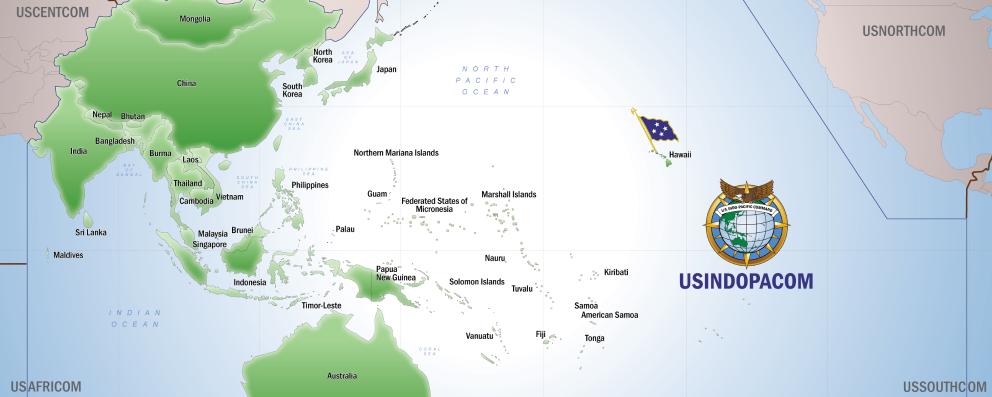
Map of the US Pentagon's Indo-Pacific Command area skill [USINDOPACOM].
JOURNAL / Juan Luis López Aranguren
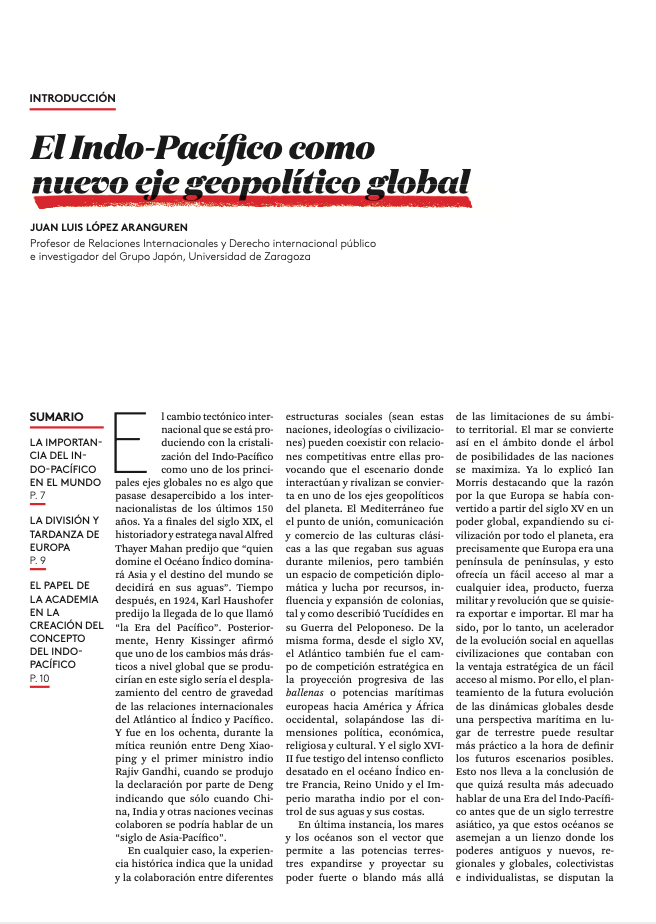 [6-page document. download in PDF].
[6-page document. download in PDF].
INTRODUCTION
The international tectonic shift that is taking place with the crystallisation of the Indo-Pacific as a major global axis is not lost on internationalists over the past 150 years. As early as the late 19th century, naval historian and strategist Alfred Thayer Mahan predicted that "whoever dominates the Indian Ocean will dominate Asia and the fate of the world will be decided in its waters". Later, in 1924, Karl Haushofer predicted the coming of what he called "the Pacific Age". Later, Henry Kissinger asserted that one of the most dramatic global changes to occur in this century would be the shift of the centre of gravity of the International Office from the Atlantic to the Indian and Pacific Oceans. And it was in the 1980s, during the legendary meeting between Deng Xiaoping and Indian Prime Minister Rajiv Gandhi, that Deng made the statement that only when China, India and other neighbouring nations work together can we speak of an "Asia-Pacific century".
In any case, historical experience indicates that unity and partnership between different social Structures (be they nations, ideologies or civilisations) can coexist with competitive relations between them, causing the scenario where they interact and compete to become one of the geopolitical axes of the planet. The Mediterranean was the point of union, communication and trade of the classical cultures to which its waters irrigated for millennia, but also a space of diplomatic competition and struggle for resources, influence and expansion of colonies, as Thucydides described in his Peloponnesian War. Similarly, from the 15th century onwards, the Atlantic was also the field of strategic competition in the progressive projection of the European whales or maritime powers towards America and West Africa, with political, economic, religious and cultural dimensions overlapping. And the 18th century saw intense conflict in the Indian Ocean between France, the United Kingdom and the Indian Maratha Empire for control of its waters and coasts.
Ultimately written request, the seas and oceans are the vector that allows terrestrial powers to expand and project their hard or soft power beyond the limitations of their territorial scope. The sea thus becomes the realm where the tree of possibilities of nations is maximised. Ian Morris has already explained this by pointing out that the reason why Europe had become a global power from the 15th century onwards, expanding its civilisation all over the planet, was precisely because Europe was a peninsula of peninsulas, and this offered easy access to the sea for any idea, product, military force and revolution to be exported and imported. The sea has therefore been an accelerator of social evolution in those civilisations that had the strategic advantage of easy access to it. Therefore, looking at the future evolution of global dynamics from a maritime rather than a terrestrial perspective may be more practical in defining possible future scenarios. This leads us to the conclusion that it is perhaps more appropriate to speak of an Indo-Pacific Age rather than an Asian land century, as these oceans resemble a canvas where old and new, regional and global, collectivist and individualist, powers vie for the projection of their interests, spheres of influence and identities to global reach.
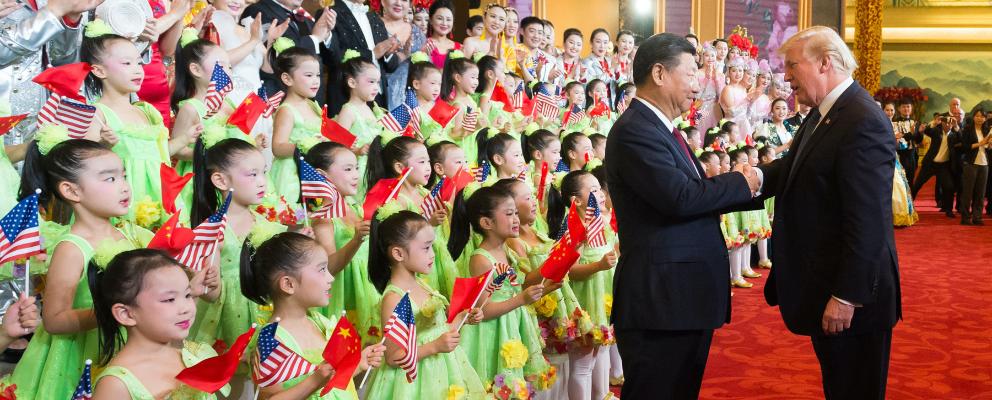
visit Xi and Trump during the US president's only visit to China, in 2017 [White House] [White House].
JOURNAL / Florentino Portero
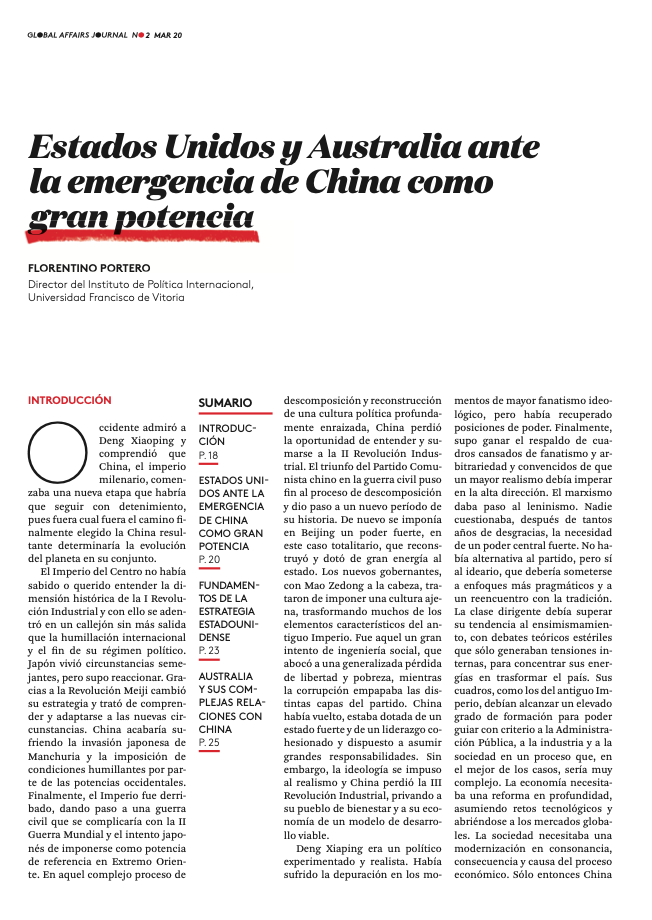 [10-page document. download in PDF].
[10-page document. download in PDF].
INTRODUCTION
The West admired Deng Xiaoping and realised that China, the millenary empire, was entering a new phase that would have to be followed closely, for whatever path was finally chosen, the resulting China would determine the evolution of the planet as a whole.
The Central Empire had been unable or unwilling to understand the historical dimension of the First Industrial Revolution and had thus entered an impasse with no way out other than international humiliation and the end of its political regime. Japan experienced similar circumstances, but was able to react. Thanks to the Meiji Revolution, it changed its strategy and tried to understand and adapt to the new circumstances. China would eventually suffer the Japanese invasion of Manchuria and the imposition of humiliating conditions by the Western powers. Eventually, the Empire was toppled, giving way to a civil war that would be complicated by World War II and the Japanese attempt to impose itself as the power of reference letter in the Far East. In that complex process of decomposition and reconstruction of a deeply rooted political culture, China missed the opportunity to understand and join the Second Industrial Revolution.
The victory of the Chinese Communist Party in the civil war put an end to the process of decomposition and ushered in a new period in its history. Once again, a strong, in this case totalitarian, power was imposed in Beijing, which rebuilt and energised the state. The new rulers, led by Mao Zedong, tried to impose an alien culture, transforming many of the characteristic elements of the old Empire. It was a grand attempt at social engineering, which led to widespread loss of freedom and poverty, while corruption permeated the various layers of the party. China was back, endowed with a strong state and a cohesive leadership willing to take on great responsibilities. However, ideology won out over realism and China lost the Third Industrial Revolution, depriving its people of welfare and its Economics of a viable model of development .
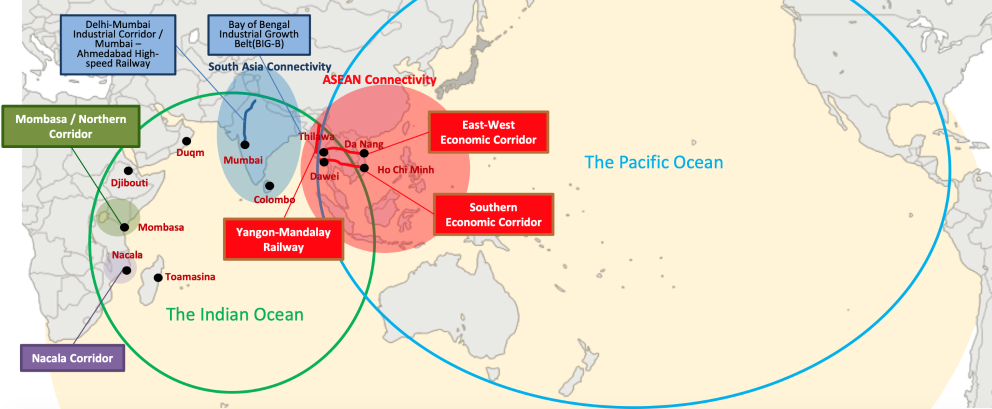
Map of the Japanese vision of the Free and Open Pacific [MoFA].
JOURNAL / Carmen Tirado Robles
 [8-page document. download in PDF].
[8-page document. download in PDF].
INTRODUCTION
The concept of the Free and Open Indo-Pacific (FOIP) is said to date back to article by Indian naval officer Captain Gurpreet Khurana, who first wrote about this geopolitical concept in early 2007, in a paper graduate "Security of Sea Lines: Prospects for India-Japan Cooperation". At that time, the free and open Indo-Pacific was primarily a geographical concept describing the maritime space stretching from the East African and West Asian littorals, across the Indian Ocean and the western Pacific Ocean to the East Asian coasts. At the same time, Japanese Prime Minister Shinzo Abe presented his foreign policy plan based on democratic values from which he proposed "I will engage in strategic dialogues at the leader's level with countries that share fundamental values such as Australia and India, with a view to widening the circle of free societies in Asia as well as in the world", which together with the consolidation of relations with the United States ("The times demanded that Japan shift to proactive diplomacy based on new thinking. I will demonstrate the 'Japan-U.S. Alliance for Asia and the World' even further, and to promote diplomacy that will actively contribute to stalwart solidarity in Asia"), creates the concept of the Quadrilateral or Quad, as opposed to a Sino-centric view of Asia.
The idea of the Quad joins the FOIP when Abe, in August 2007, in his speech before the Indian Parliament, built on the "Confluence of the Indian and Pacific Oceans" and "the dynamic coupling as seas of freedom and prosperity" of Asia's largest geographical region and later on, in his second term, he presented the new Indo-Pacific geopolitical framework at the 6th Tokyo lecture on development Africa, which took place in Nairobi (Kenya) on 27 August 2016 (TICAD VI).
WORKING PAPER / María del Pilar Cazali
ABSTRACT
The Brexit deal has led to a shift in the UK's relationship not only with the European Union but also with other countries around the world. Africa is key in the new relationships the UK is trying to build outside from the EU due to their historical past, the current Commonwealth link, and the important potential trade deals. This article looks to answer how hard the UK will struggle with competition in the African country as an individual state, no longer member of the EU. These struggles will be especially focused on trading aspects, as they are the most important factors currently for the UK in the post-Brexit era, and it's also the strongest focus of the EU in Africa.
![Insight into mineral extraction on an asteroid, from ExplainingTheFuture.com [Christopher Barnatt]. Insight into mineral extraction on an asteroid, from ExplainingTheFuture.com [Christopher Barnatt].](/documents/10174/16849987/gaj-foto-4.jpg)
▲ Vision for mineral extraction on an asteroid, from ExplainingTheFuture.com [Christopher Barnatt].
GLOBAL AFFAIRS JOURNAL / Mario Pereira
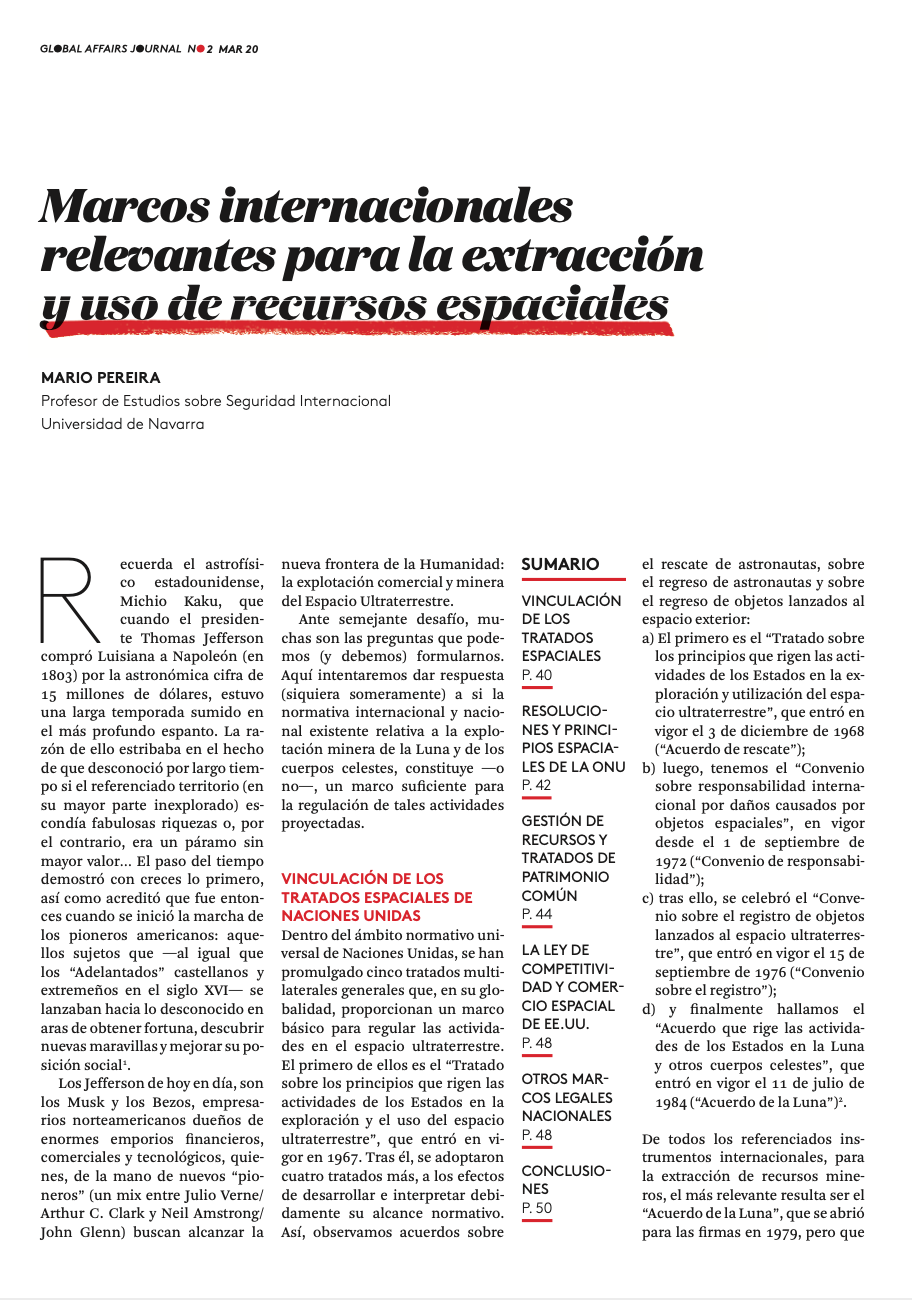 [14-page document. downloadin PDF]
[14-page document. downloadin PDF]
INTRODUCTION
The American astrophysicist Michio Kaku recalls that when President Thomas Jefferson bought Louisiana from Napoleon (in 1803) for the astronomical sum of 15 million dollars, he spent a long period of time in deep fear. The reason for this lay in the fact that he did not know for a long time whether the territory (mostly unexplored) hid fabulous riches or, on the contrary, was a worthless wasteland... The passage of time proved the former, as well as proving that it was then that the march of the American pioneers began: those people who - like the "Adelantados" of Castile and Extremadura in the 16th century - set out for the unknown in order to make their fortune, discover new wonders and improve their social position.
The Jeffersons of today are the Musks and the Bezos, American businessmen, owners of huge financial, commercial and technological empires, who, hand in hand with new "pioneers" (a mix between Jules Verne/Arthur C. Clark and Neil Armstrong/John Glenn) seek to reach the new frontier of Humanity: the commercial and mining exploitation of Outer Space.
Faced with such a challenge, many questions can (and should) be asked. Here we will try to answer (at least briefly) whether the existing international and national rules and regulations on the mining of the Moon and celestial bodies constitutes - or does not constitute - a sufficient framework for the regulation of such planned activities.
![proposal of a lunar base for obtaining helium, taken from ExplainingTheFuture.com [Christopher Barnatt]. proposal of a lunar base for obtaining helium, taken from ExplainingTheFuture.com [Christopher Barnatt].](/documents/10174/16849987/gaj-foto-3.jpg)
▲ proposal of a lunar base for obtaining helium, taken from ExplainingTheFuture.com [Christopher Barnatt].
GLOBAL AFFAIRS JOURNAL / Emili J. Blasco
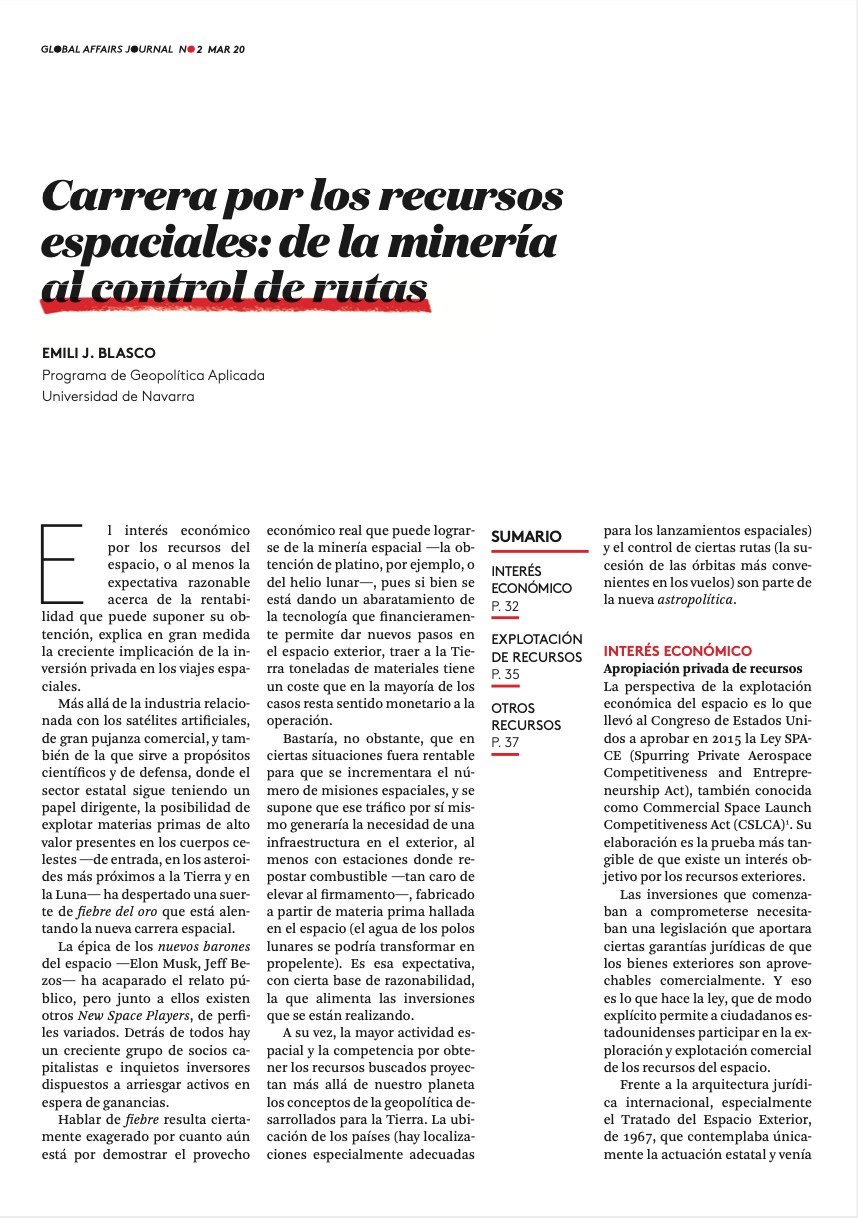 [8-page document. downloadin PDF]
[8-page document. downloadin PDF]
INTRODUCTION
The economic interest in space resources, or at least the reasonable expectation of the profitability of obtaining them, goes a long way to explaining the growing involvement of private investment in space travel.
Beyond the commercially strong artificial satellite industry, as well as those serving scientific and defence purposes, where the state sector continues to play a leading role, the possibility of exploiting high-value raw materials present on celestial bodies - from entrance, on the closest asteroids to the Earth and on the Moon - has awakened a kind of gold rush that is fuelling the new space degree program .
The epic of the new space barons - Elon Musk, Jeff Bezos - has captured the public narrative, but alongside them there are other New Space Players, with varied profiles. Behind them all is a growing group of equity partners and restless investors willing to risk assets in the hope of profit.
To talk of space mining fever is certainly exaggerated, as the real economic benefit to be gained from space mining - obtaining platinum, for example, or lunar helium - has yet to be demonstrated. While the technology is becoming cheaper, financially enabling new steps into outer space, bringing tons of materials back to Earth has a cost that in most cases makes the operation less financially meaningful.
It would be enough, however, that in certain situations it would be profitable to increase the number of space missions issue , and it is assumed that this traffic in itself would generate the need for an infrastructure abroad, at least with stations to refuel fuel - so expensive to lift into the sky - manufactured from subject raw materials found in space (the water at the lunar poles could be transformed into propellant). It is this expectation, with some basis in reasonableness, that is fuelling the investments being made.
In turn, increased space activity and the skill to obtain the resources sought project beyond our planet the concepts of geopolitics developed for Earth. The location of countries (there are particularly suitable locations for space launches) and the control of certain routes (the succession of the most convenient flight orbits) are part of the new astro-politics.
Showing range 1 - 10 of 22 results.

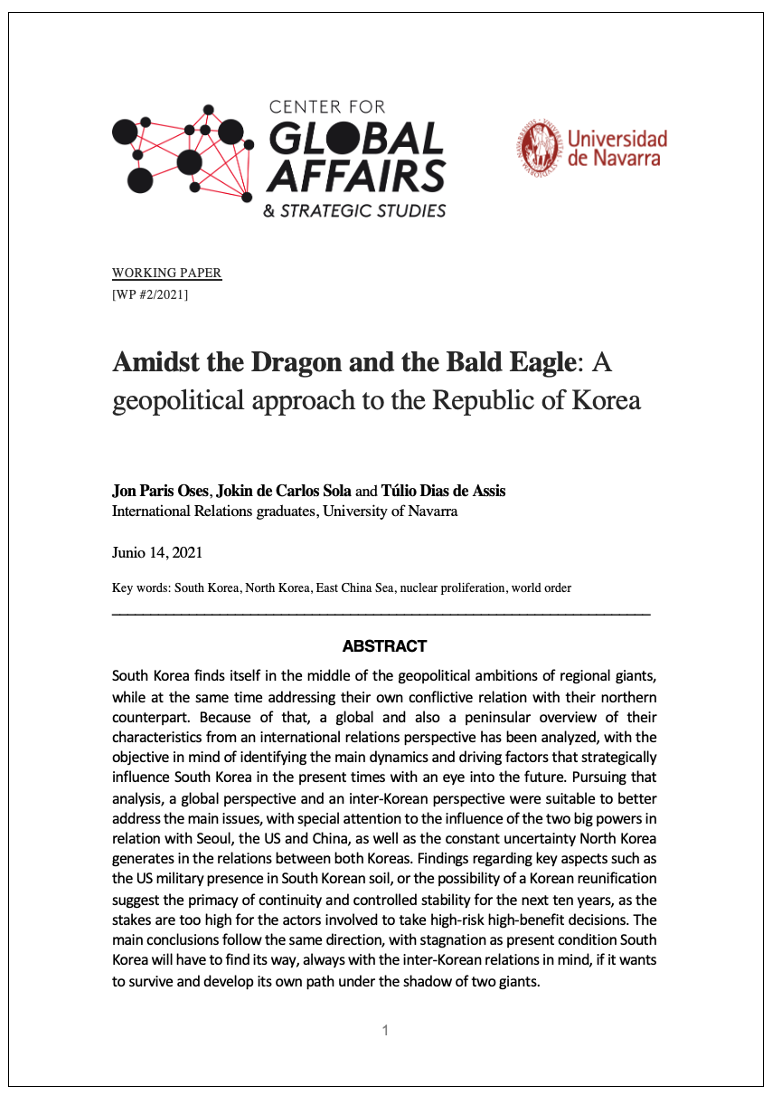 [
[